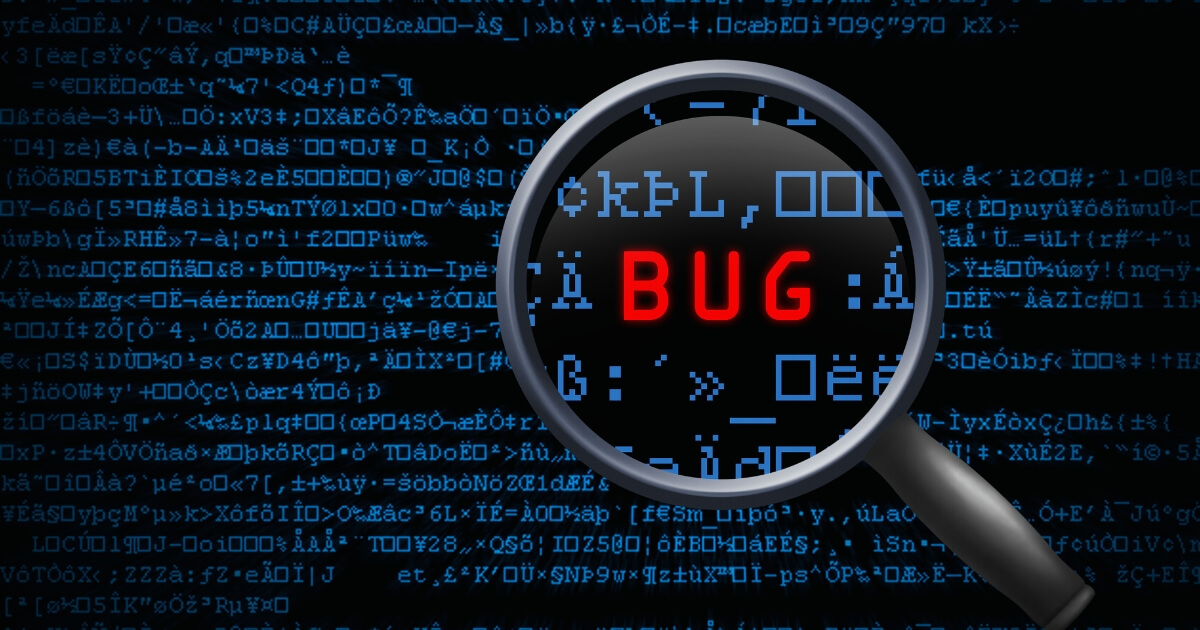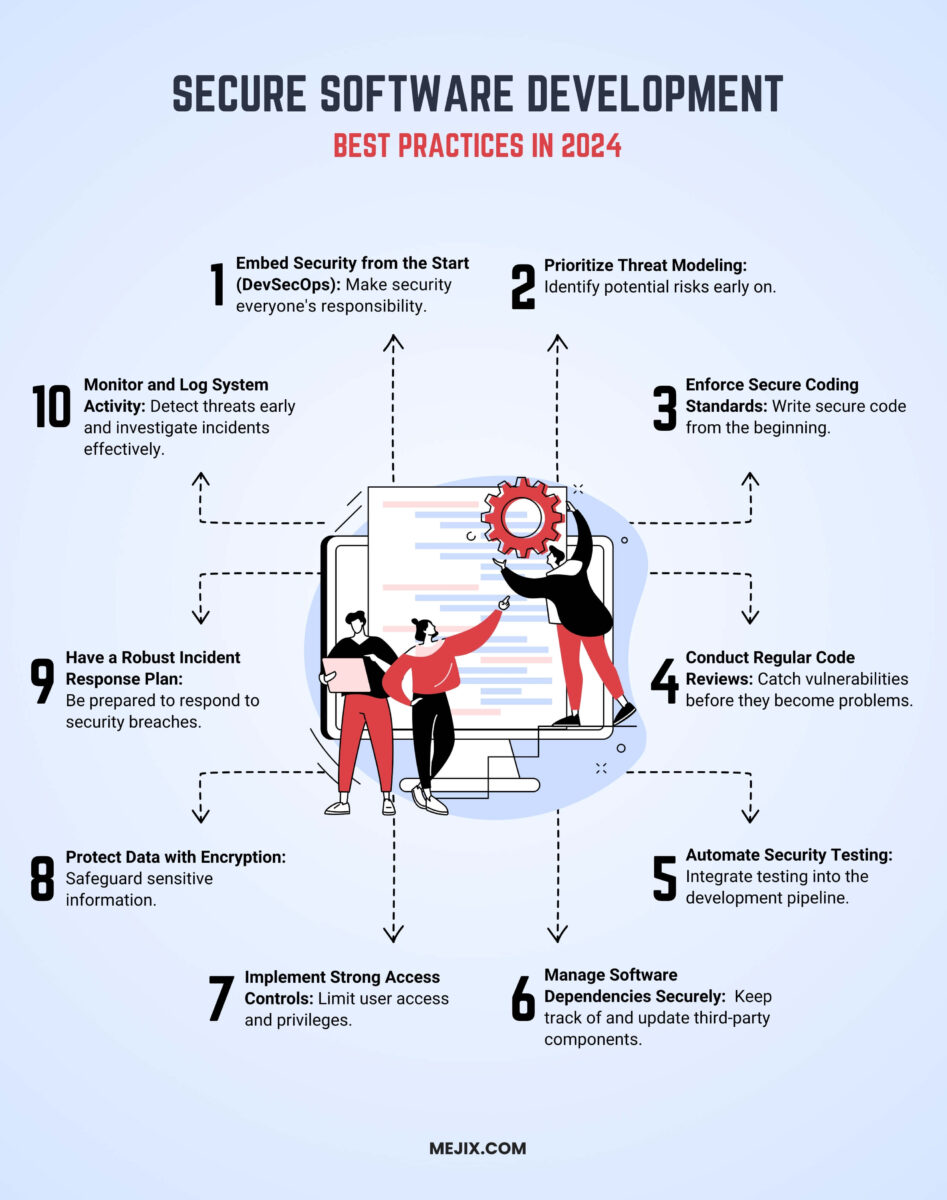Secure Software Development in 2024: Best Practices for Enhanced Security
As businesses increasingly rely on digital solutions, secure software development is becoming more vital than ever. With cyber attacks and threats increasing yearly, businesses require resilient software built with security in mind.
Today, we explore the ins and outs of secure software development, outlining the critical threats businesses face and exploring the best practices for software security in 2024.
What is Secure Software Development?
Secure software development is the practice of designing, coding, and deploying software with security considerations at every stage. By identifying and mitigating vulnerabilities early in the development process, this approach aims to lower the chance of exploitation.
Benefits of Secure Software Development
Secure software development identifies and addresses vulnerabilities before deployment, thus reducing the risk of data breaches and cyber attacks while ensuring cost efficiency.
Building secure software is essential for regulatory compliance. Building customer trust is another key advantage – brand reputation can suffer significantly if customers are affected by security threats when using your services.
Main Security Threats Faced by Businesses

Today’s digital landscape is rife with security threats that can gravely compromise businesses’ operations, data integrity, and customer trust.
According to a recent study by Checkpoint, weekly cyber attacks have increased by 30% in the second quarter of 2024 compared to Q2 2023, targeting industries like education, healthcare, and manufacturing.
Experts predict these kinds of cyber attacks will keep rising due to factors like the continued increase of digital transformation and cybercriminals’ use of advanced techniques based on AI and machine learning.
Understanding these threats is the first step in building secure software. Here’s a glance at some of the main security concerns:
- Malware and Ransomware: Malicious software can infiltrate systems, steal data, or hold systems hostage until a ransom is paid.
- Phishing Attacks: Cyber attackers use deceptive emails or websites to trick users into revealing personal or financial data.
- SQL Injection: Attackers exploit vulnerabilities in an application’s database layer to execute malicious SQL statements, potentially gaining access to sensitive data.
- Cross-Site Scripting (XSS): Attackers inject malicious scripts into web pages to steal user data or manipulate behavior.
- Denial of Service (DoS) Attacks: Attackers overwhelm systems with traffic, rendering them unusable and disrupting services.
- Insider Threats: Employees or contractors with access to sensitive information may intentionally or unintentionally cause security breaches.
- Supply Chain Attacks: Software suppliers are targeted to compromise downstream applications.
The Foundation of Software Security: Secure Development Lifecycle

Integrating security measures at every development phase is one of the most important ways to build safe software. Here are some key approaches to this method:
- Security by Design: This foundational principle integrates security considerations throughout the entire software development lifecycle. This proactive approach ensures that security is a core component etched into the very fabric of the software.
- DevSecOps: An essential approach to Security by Design that takes this concept further by integrating security into the DevOps process. It ensures that security is everyone’s responsibility and is automated as much as possible.
- The Secure Development Lifecycle (SDLC): The overarching framework encompassing both Security by Design and DevSecOps. It provides the structure for incorporating security activities throughout the entire software development lifecycle.
To better understand how these terms apply to software security, we can consider Security by Design the what—the mindset and approach to building secure software. Meanwhile, DevSecOps is the how—the practices and tools used to implement security. SDLC is the when and where—the stages of the development process where security activities occur.
Best Practices for Secure Software Development in 2024

1. Embed Security from the Start (DevSecOps)
Shifting security left means incorporating security into every stage of the development lifecycle. From design to deployment, security should be a shared responsibility that is prioritized every step of the way.
2. Prioritize Threat Modeling
Identify potential vulnerabilities and risks early on to design defenses and allocate resources effectively and proactively. Involving the entire team in this process will foster collaboration and enhance security.
3. Enforce Secure Coding Standards
Adhering to established coding standards, such as OWASP Secure Coding Practices, helps prevent common vulnerabilities. Provide developers with clear guidelines and training to ensure they write secure code. Regularly update standards to address emerging threats.
4.Conduct Regular Code Reviews
Peer reviews are essential for catching security vulnerabilities. Combine manual code reviews with automated tools for efficiency. Encourage a culture of code ownership and shared responsibility.
5.Automate Security Testing
Incorporate security testing into your CI/CD pipeline. Static and dynamic analysis tools can identify vulnerabilities early in the process, and regular testing helps prevent issues from reaching production.
AI-driven security tools can enhance these processes by predicting potential threats and automating the identification and remediation of vulnerabilities. AI’s capacity to analyze vast amounts of data can improve protection, ensuring continuous and proactive security monitoring.
6. Manage Software Dependencies Securely
Use dependency management tools to identify and address security risks promptly. Maintain an inventory of all third-party components used in the project and ensure regular updates and patching.
7. Implement Strong Access Controls
Limit user access to only what is necessary to perform their job functions. Employ role-based access control (RBAC) and the principle of least privilege. Regularly review and update access permissions.
8. Protect Data with Encryption
Safeguard sensitive data using strong encryption algorithms at rest and in transit. Implement secure key management practices, including key rotation, and ensure that encryption keys are stored securely and access is restricted.
9.Have a Robust Incident Response Plan
A well-defined incident response plan ensures that your organization can quickly and effectively respond to security incidents. Develop a detailed plan outlining roles, responsibilities, and procedures. Regularly test and update the plan based on lessons learned.
10.Monitor and Log System Activity
Continuously monitor systems for suspicious activity to help detect and respond to security threats in real time. Use security information and event management (SIEM) tools to analyze logs and detect threats. Implement alerts for abnormal behavior.
Conclusion
Secure software development is more critical than ever in 2024. Prioritizing security throughout the development process is essential for protecting sensitive data and enhancing trust and compliance, ultimately contributing to the business’s success and reputation.
Secure Your Business Software with Mejix
At Mejix, we prioritize security at every step of the development process. Our developers leverage the latest technologies to ensure robust security features and resilient software that ensures data protection and detects potential threats early.
Our custom software development services include ERP systems, CRMs, online stores, trading, and payment systems. As a product-first company, we take our time to understand your business’s needs and ensure viable growth and scalability.
Browse our portfolio to see our latest work, and let’s build your dream project together!












